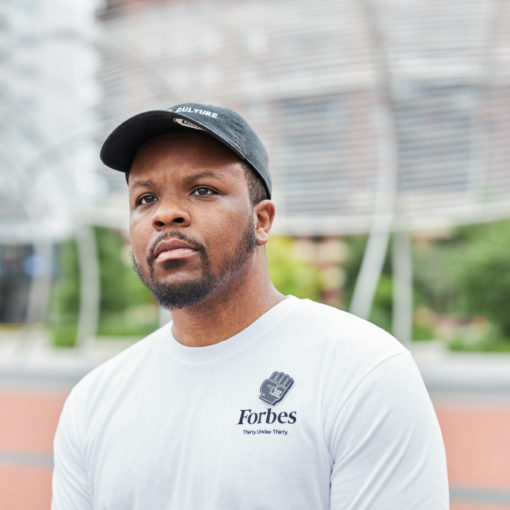
To answer this question, we should start by defining “racism.” The definition I use when consulting with our clients is the following: Racism is the belief that groups of humans (“races”) possess different shared inheritable traits, abilities or qualities corresponding to physical appearance. This view can take the form of doctrines, political and/or social systems in which groups are ranked as inherently superior or inferior to each other based on the presumed shared characteristics.
We are talking about beliefs and presumptions, not absolute truths. The brain is a machine for jumping to conclusions. Beliefs and presumptions can change (but not easily). It helps to start the discussion here.
It also helps to recognize that the Civil War did not end that long ago. On Sunday, May 31, 2020, Irene Triplett, the last Civil War pensioner, died – seriously! The daughter of an elderly Civil War veteran (of both sides – first Confederate and then Union), Mose Triplett, and young wife and mother, Elida Hall, Irene received a $73.13 check each month from the Department of Veterans Affairs. Her last check may be in the mail as you read this.
Racist beliefs and presumptions (unconscious biases) have led to the current systemic racism that is the high-level focus of protests throughout the nation. These beliefs and unconscious biases have conditioned all of us to act in ways that sustain these racist systems. Every person, and especially every leader, should acknowledge that we are a product of our experiences in these systems. We don’t know everything. We don’t see everything. Coming to terms with this reality would be the beginning of true heartfelt conversation and transformation.
As a product of this system, I too am not innocent. On a personal level, I push myself to listen, observe, seek to understand others and learn. I invest in my own learning and development when it comes to finding ways to challenge my false beliefs and assumptions. I read. I reach out and talk to people. I empathize.
On the other hand, I have been on the receiving end of racism, as well. I know how it feels to be dismissed because of the color of my skin when attempting to share my perspectives during business meetings. It hurts. It took me a while to realize what was happening around me. Suddenly, well-intentioned people were talking as if I was not in the room. They acted as if they were the experts on what communities of color needed and thought. I felt invisible – and disposable.
There are many actions businesses can and do take to help eradicate the systemic facets of racism. If you read the news, you’ll see that many businesses are stepping up to move the needle in a positive direction.
To join that movement, you need to understand and acknowledge something important. Depending on the state of your organization, you may need to take a number of different approaches to drive and achieve change. As with society overall, moving the needle on this topic is not easy – it’s not just a small project, quick and painless CBT [cognitive behavioral therapy] or social event. It’s important to keep in mind that changing hearts, minds and behaviors takes time and effort. It takes leadership commitment and intentionality.
What we tell our clients and it aligns with one of my favorite quotes attributed to a long-ago Chinese general and philosopher, Sun Tzu (544 BC – 496 BC): “Strategy without tactics is the slow route to victory. Tactics without strategy is the noise before defeat.” Don’t be knee-jerk about this important topic. Be planful and methodical. Here are four high-level steps you need to take:
It starts with you. Recognize your own privilege, unconscious biases and the implications of having them. Take the self-awareness journey seriously. You are at the helm. Guide your crew. Be their ally.
Do an honest cultural assessment of your organization. This can be painful but very rewarding.
Set a strategy based upon what you learn from your assessment. You need to know where you are going before you take off.
Execute your strategy via appropriate tactics. Do the important things your strategy indicates are needed – you don’t want the slowest route to victory. And, be agile as things change on the ground.
Many of my clients tell me that they want to make a positive impact on the community. They understand that it’s good for their workers, workers’ families, future workers, current and future customers. Below are some more detailed tactics businesses can take to make that happen, keeping in mind the size and resources of the organization:
Make sure leadership walks the talk. Diversity is not just a compliance issue, as one HR executive once told me in the past.
Recruit, engage and retain a diverse workforce. By diversifying the makeup of your organization, you are able to explore new viewpoints, innovate, better serve your diverse customer base and lift families out of poverty.
Invest in the youth. Youth development programs will build a robust talent pipeline.
Pay a fair and equitable living wage. Period.
Leverage your strength to impact public policy. Larger organizations have government affairs staff that are paid to do this. Why not ban the box and give humanity a second chance?
Lend your voice and financial support to social justice causes. Support the organizations that are doing the work in your backyard and nationally.
When social injustice takes place, acknowledge it publicly. Take a stand against racism (and misogyny!). Communicate with your employees and customers openly. Most customers support anti-racist practices and organizations. Believe me.
Encourage your workers to engage in civic life. They can vote, make phone calls, write emails, attend meetings with political leaders, run for public office, volunteer for campaigns, volunteer for nonprofits, etc. Of course, you can’t tell them what side of an issue to support, but you can give them time off to vote, serve and volunteer, for example.
Assess and change, as needed, your workplace policies, processes and procedures.
Develop and implement a robust supplier diversity program. This way, your money goes directly to the community you are trying to help. Don’t replace or compete with local minority-owned small businesses if you don’t truly have to. Instead, help them grow. Local minority-owned small businesses of many industries are very willing and able to help you achieve your goals. Look inside your own backyard before searching across the country for help. Regarding supplier diversity spending goals, the more you spend, the greater impact you have. The opposite is also true. Put your money where your mouth is.
Make sure your staff leading diversity and inclusion efforts have strong experience and knowledge of the profession – not just passion. Like with any other business function, it’s important that they really know what they are doing – and before they start leading. Doing otherwise can put your very well-intentioned efforts and goals at risk.
Develop and implement employee resource groups with a purpose and influence. Empower and reward employees for going above and beyond their call of duty. These employees are not volunteers. They are overachievers who care about their colleagues and the organization they represent. They respond to your call to action. Amplify their voices and intentionally pave a path to career progression for them.
Assess and upgrade training, as needed. Training can only do so much and is not the answer to ending racism. But it will start the conversation and build awareness. Training helps organizations establish a baseline and skills for the courageous conversations to come.
For the larger federal contractors out there, complete truly impactful “good faith efforts” for your affirmative action programs. Doing the right things for your workers and community will also help you maintain your taxpayer-funded business.
Although eradicating racism is not for the faint of heart, it should be one of every business leader’s priorities. It demands focus, energy and relentless optimism. In other words, it is one of the biggest challenges you will ever face as a business leader.
So, about the question: What role do businesses play in eradicating racism? I’d say, business leaders don’t shy away from challenges, they tackle and conquer them. ν




